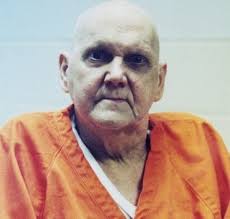An Invitation to Chess
An Invitation to Chess: A Picture Guide to the Royal Game was one of the first books I read when I started playing chess in the late 1960s. It explained the chessmen, the moves, the object of the game, and it had lots of pictures (photographs) and chess diagrams. There are 221 pages with 41 photographs and 468 diagrams, so it was easy to follow without a chessboard. The book included 21 games (written in English descriptive format) through diagrams (movie of a chess game) and 10 chess combinations.
The book (ISBN: 0923891935) is perhaps the most successful chess book ever written, with sales of over 500,000 since it was published. Its original cost was $2.00. The other bestselling book close to these sales figures is Bobby Fischer Teaches Chess.
The content list breaks things down to subsections like "How the King Moves and Captures," and "How the Pawn Captures 'en passant.''" They provide a special section cautioning the new player of common mistakes, like "Premature Attacks," and "Pawn Grabbing with the Queen." The book consists of four parts: the rules of chess, basic principles, opening principles, and chess combinations.
It was written in 1944 by Irving Chernev (1900-1981) and Kenneth Harkness (1898-1972. At the time, Chernev was Associate Editor of Chess Review magazine and Harkness was the Managing Editor of Chess Review magazine.
It was first published by Simon and Schuster in New York in 1945, then later by Faber in the UK in 1959. It was then reprinted by Fireside Chess Library in 1985. In 1998, Ishi Press published another paperback edition which included biographies of the authors and larger size to make it easier to read. For years, the book was never reprinted or updated due to disputes over the ownership.
Chernev was a Russian-born American chess author who came to the US in 1920. He was a national master who wrote at least 10 chess books. He died in San Francisco in 1981.
Harkness was mostly a chess organizer and editor of Chess Review who was born in Glasgow, Scotland. He was an International Arbiter and a member of the FIDE Permanent Rules Commission. He died on a train on Yugoslavia, on his way to the 1972 Skopje Chess Olympiad. He was not a chess master, but he wrote at least 5 chess books. In 1950, he wrote Invitation to Bridge.
In the foreword, the authors said that in Russia, children play chess almost before they learn to speak. And rather than put a second queen in a picture, the authors used a rook, turned upside down, to represent a second queen for a position that had two queens on the board for White.
The games themselves are written in English descriptive notation. There is not very much in opening variations, but the authors list the total amount of possible ways of playing the first 10 moves. They quote on page 190 the number as 169,518,829,100,544,000,000,000,000,000!
The book itself is 221 pages in length (again, lots of diagrams) and is one of the most successful chess books ever written, with sales over 500,000. It was once considered a #1 best seller in chess books. Bobby Fischer studied this book when he first started playing chess, but later moved on to more advanced chess books.
It is a basic beginner's book that could be updated with better photographs (the ones in the book are sometimes blurry) and the moves converted into algebraic notation. I would even add a few more traps and give credit to some of the players who played the games and combinations found in the book.
Many people have recommended this book. International Master Kenneth Regan said that this was one of his three favorite books (besides My System and Pawn Power in Chess) which he still recommends as the best book spanning the progression from beginner to advanced thinking, and which shows some of the beauty of the game.




Comments
Post a Comment